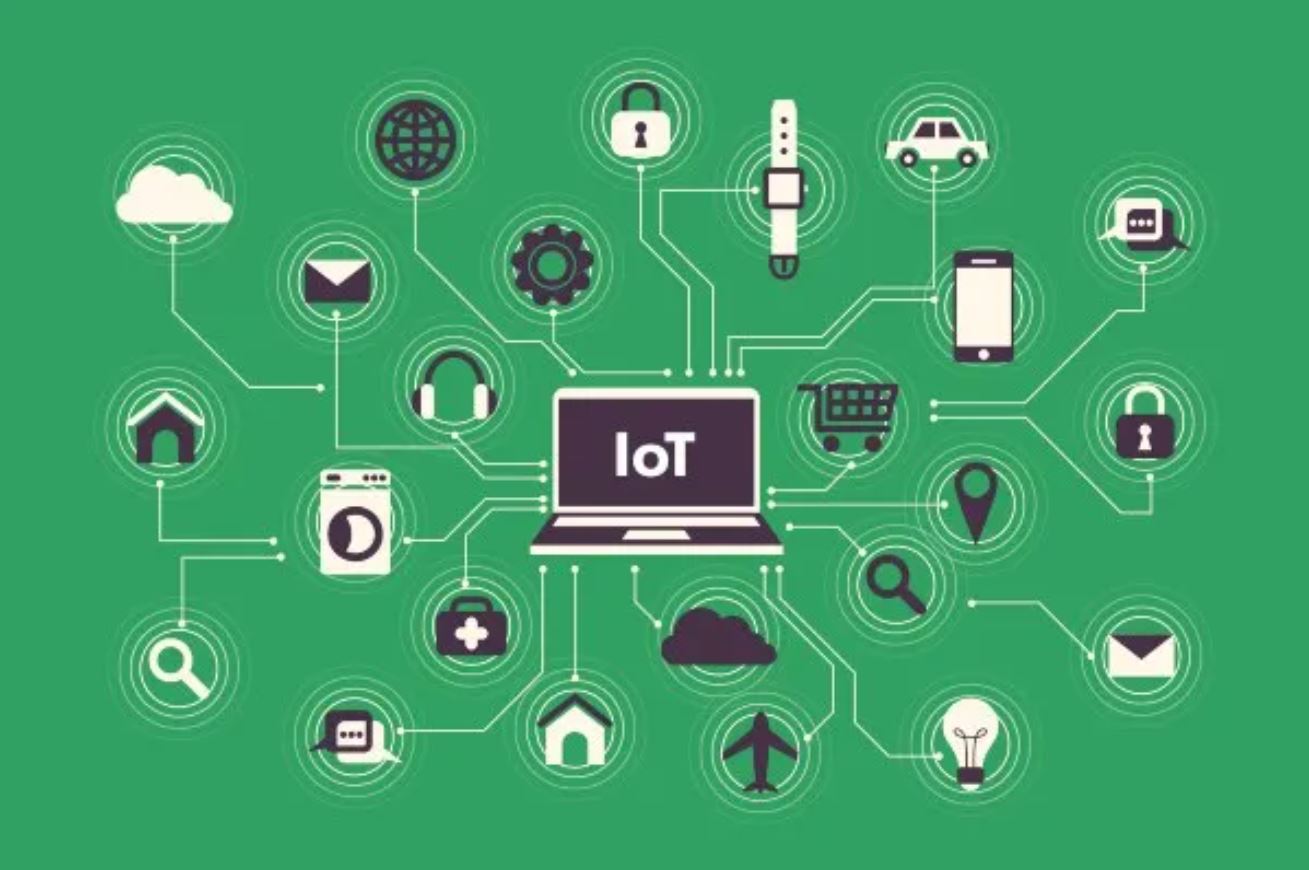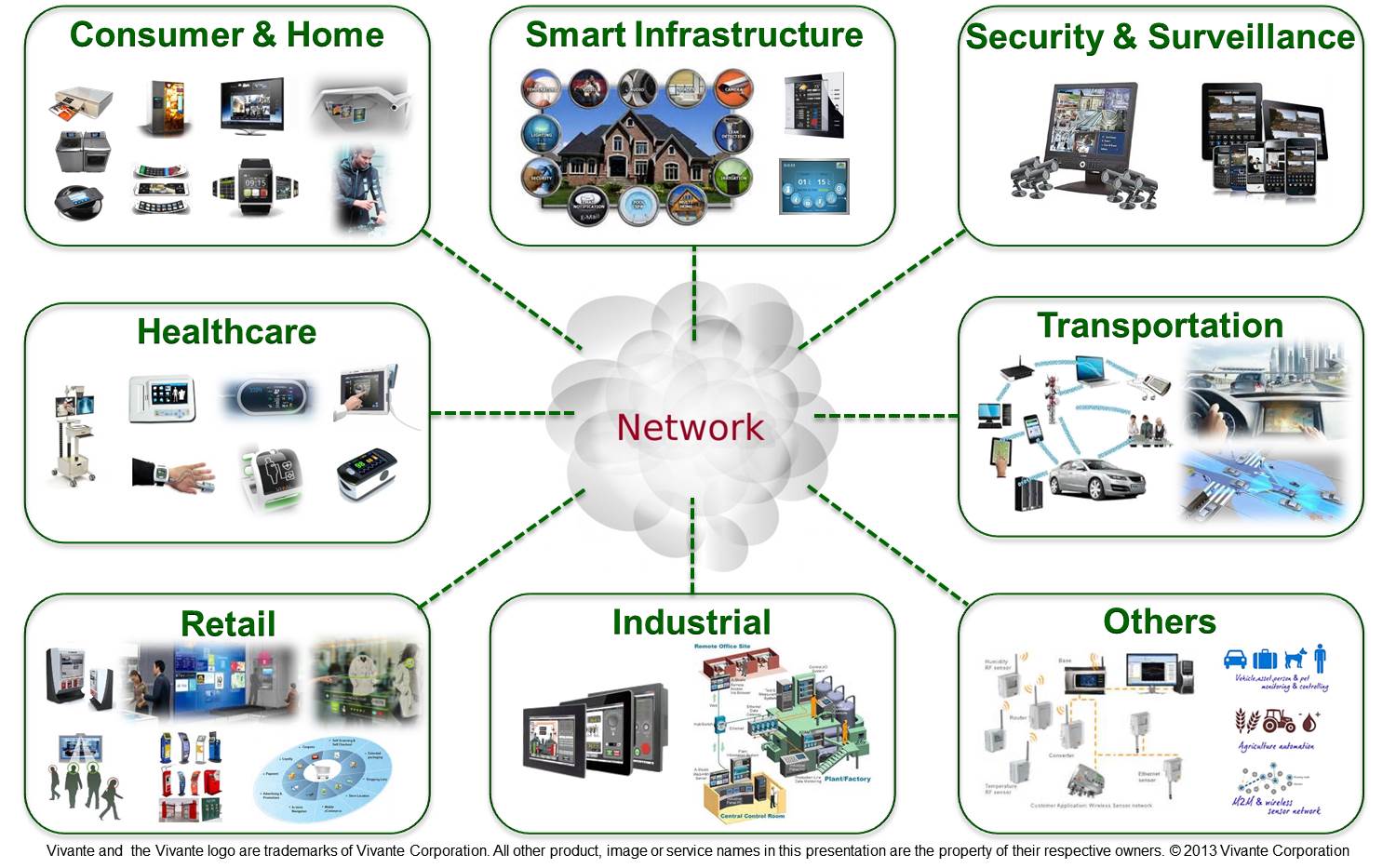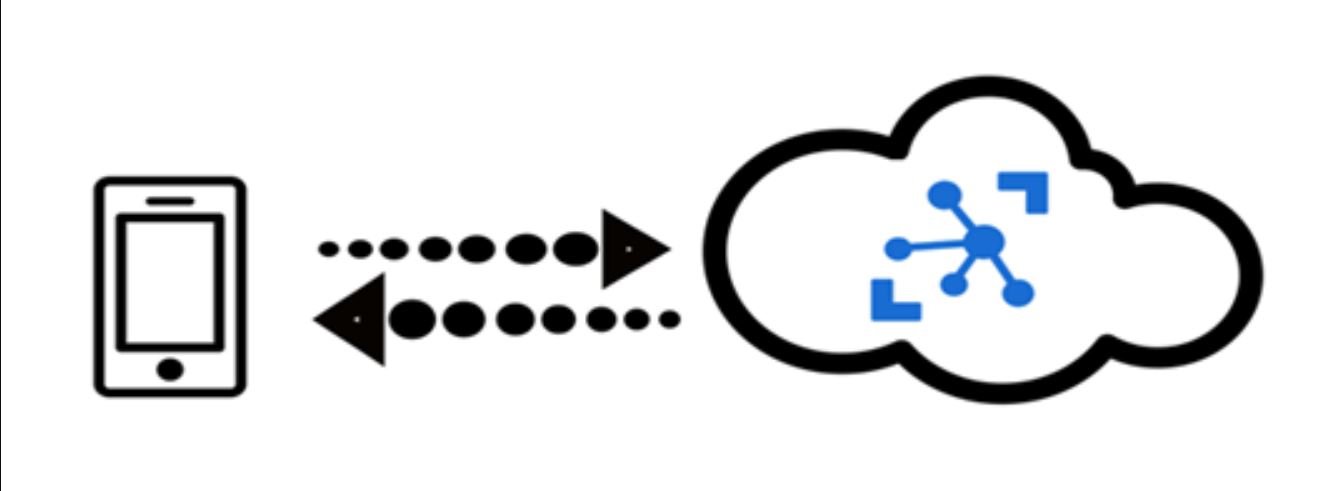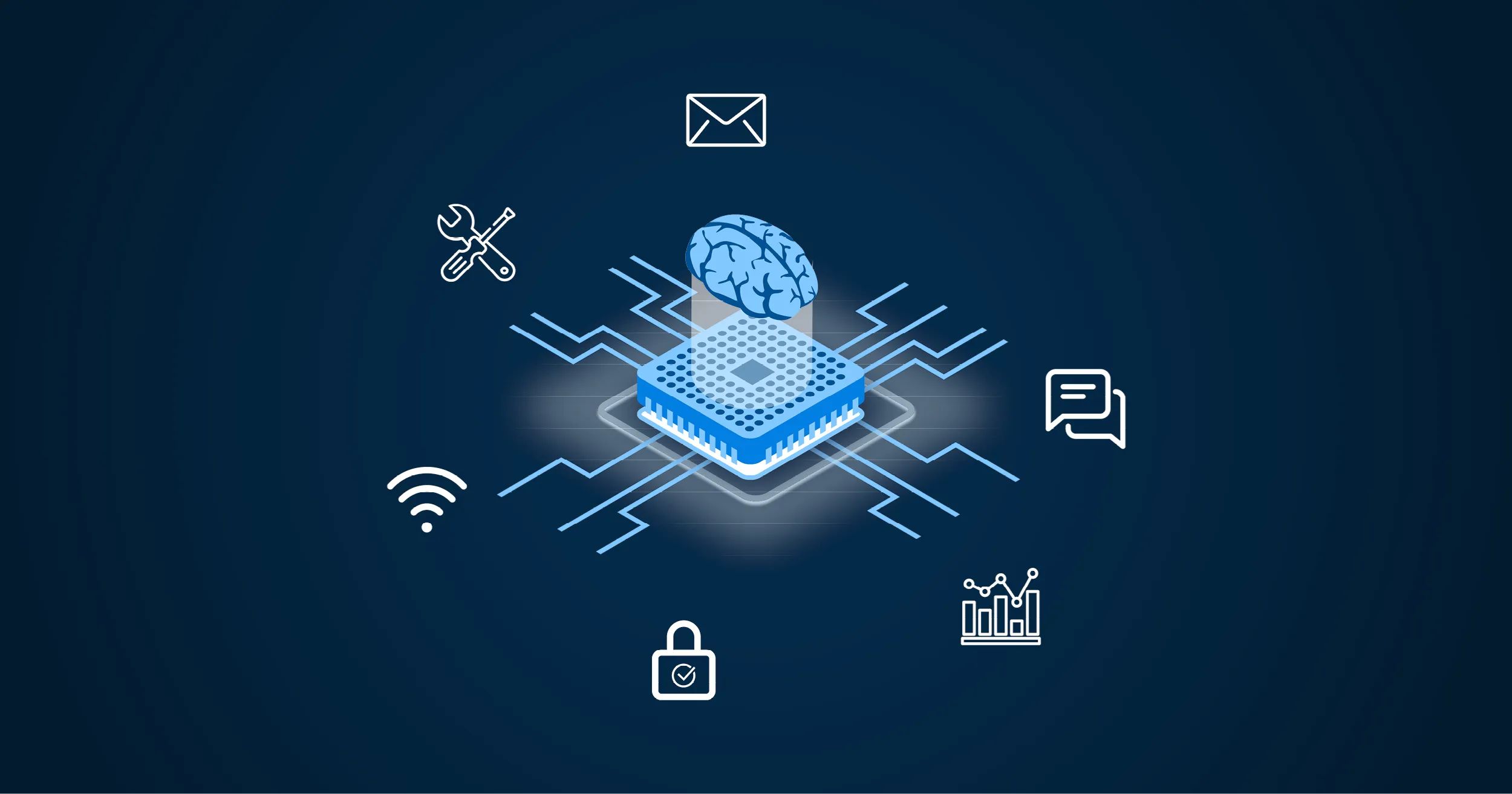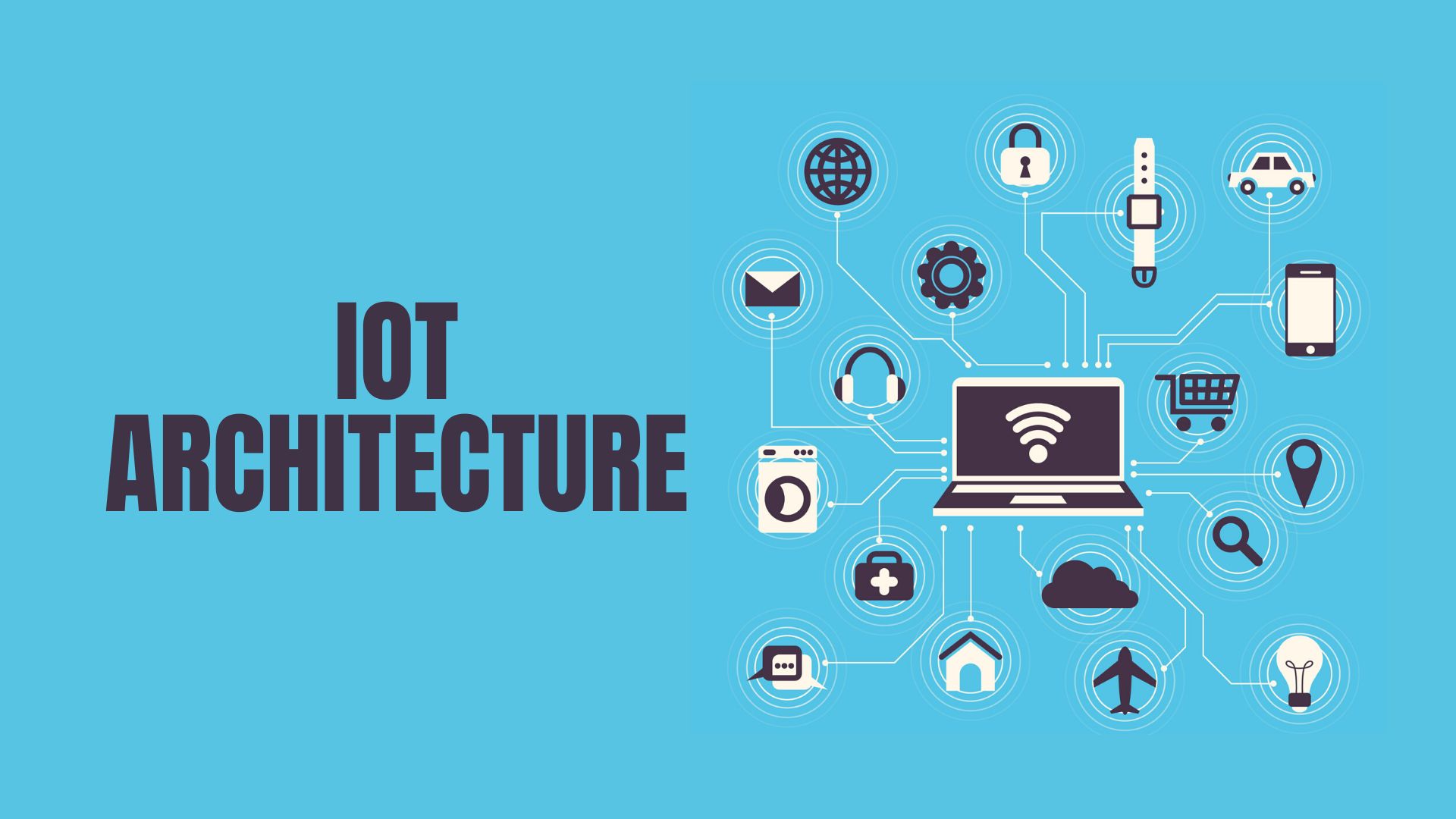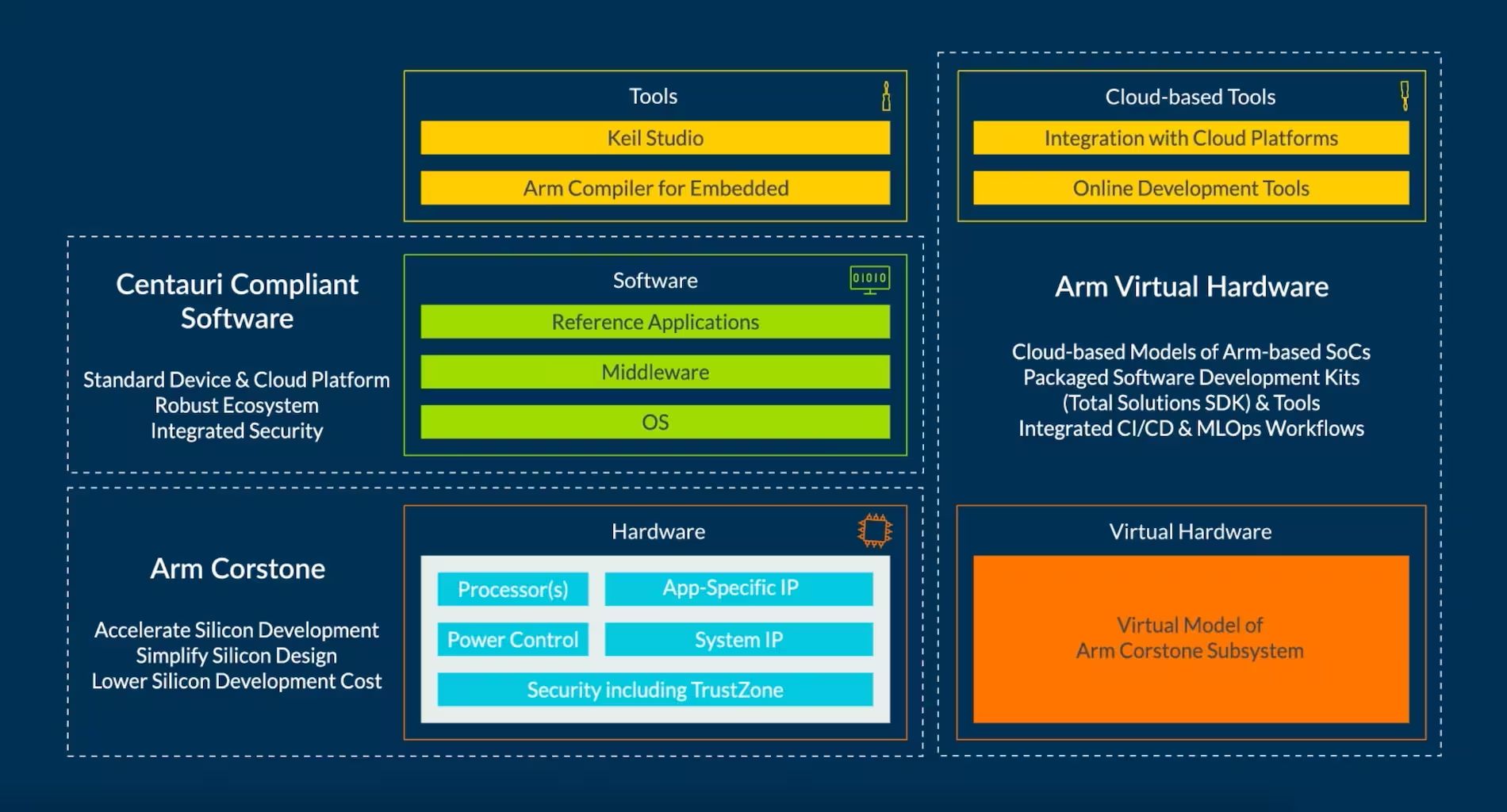Introduction
The Internet of Things (IoT) has revolutionized the way we interact with everyday objects and devices. From our homes to our cars, IoT allows us to control and monitor various devices remotely, providing convenience, efficiency, and enhanced functionality. This interconnected network of devices has opened up a world of possibilities, making our lives more connected and seamless.
IoT refers to the network of physical devices that are embedded with sensors, software, and connectivity, allowing them to collect and exchange data. These devices can range from smart home appliances, wearables, and industrial machinery to vehicles and medical devices. The beauty of IoT lies in its ability to connect these devices and enable communication between them, often through the internet.
Controlling devices in the IoT ecosystem has become simpler and more accessible through various methods. These methods offer users flexibility and convenience in interacting with their IoT devices, adapting to their preferences and needs. Whether through direct control, mobile applications, web-based platforms, voice commands, scheduled automation, or sensor-based triggers, users have a range of options to control their IoT devices effectively.
In this article, we will explore different methods of controlling devices in the IoT ecosystem. From direct control to advanced automation techniques, we will delve into the various options available to users. By understanding these methods, you can harness the power of IoT to tailor your device experiences and streamline your daily activities.
What is IoT (Internet of Things)?
The Internet of Things (IoT) refers to the network of physical objects or “things” that are embedded with sensors, software, and connectivity, allowing them to collect and exchange data. These objects can be anything from everyday devices like refrigerators, thermostats, and cars to complex industrial machinery and medical devices. The IoT ecosystem enables these devices to connect and communicate with each other, often through the internet.
The proliferation of IoT has been driven by advancements in technology, including miniaturization, wireless communication, and cloud computing. These advancements have made it possible to integrate sensors and smart capabilities into a wide range of devices, transforming them into “smart” objects that can be remotely monitored and controlled.
One of the key benefits of IoT is the ability to gather data from connected devices and analyze it to gain insights and improve efficiency. For example, a smart thermostat in your home can track your temperature preferences and adjust the settings accordingly, optimizing energy consumption and creating a comfortable living environment. In industrial settings, IoT-enabled sensors can monitor machines and identify potential issues before they lead to costly breakdowns, allowing for proactive maintenance and reducing downtime.
IoT has also revolutionized the way we interact with our devices. Through smart home applications or voice assistants, we can control our devices remotely, schedule tasks, and receive real-time notifications. This level of control and automation adds convenience and efficiency to our daily lives.
Furthermore, the potential of IoT extends beyond individual devices. With an interconnected network of devices, IoT has the power to create ecosystems where devices can seamlessly communicate with each other, leading to more intelligent and interconnected systems. For example, a smart home ecosystem can integrate various devices like lighting, security, and entertainment systems, allowing for automated interactions and personalized experiences.
As the world becomes more connected, the number of IoT devices is expected to grow exponentially. This growth brings with it new challenges, such as data security, privacy concerns, and interoperability between different devices and platforms. However, with proper safeguards and standardization efforts, IoT has the potential to enhance our lives and transform industries across the board.
Types of Devices in IoT
The Internet of Things (IoT) encompasses a wide range of devices that can be connected and integrated into a network, enabling them to collect and exchange data. These devices vary in their functionality, purpose, and industry application. Understanding the different types of devices in IoT is crucial in harnessing the full potential of this technology. Let’s explore some of the common types of devices found in the IoT ecosystem:
1. Smart Home Devices: Smart home devices are designed to make our homes more convenient, secure, and energy-efficient. These devices include smart thermostats, lighting systems, door locks, security cameras, and household appliances. They can be controlled remotely through mobile apps or voice assistants, allowing users to monitor and manage their homes from anywhere.
2. Wearable Devices: Wearable devices have gained popularity in recent years, tracking our health and fitness activities. These include smartwatches, fitness trackers, and healthcare devices. They collect data such as heart rate, sleep patterns, and exercise metrics, providing valuable insights and encouraging healthier lifestyles.
3. Industrial IoT Devices: Industrial IoT devices are used in manufacturing, logistics, and other industrial settings to optimize processes, enhance productivity, and reduce costs. These devices can include sensors, actuators, RFID tags, and monitoring systems. They enable data collection and analysis, allowing businesses to make data-driven decisions and streamline operations.
4. Connected Cars: With the rise of connected vehicles, cars have become an integral part of the IoT ecosystem. Connected cars have features such as GPS navigation, remote unlocking, engine diagnostics, and entertainment systems that can be controlled through mobile apps. They also contribute to safer driving through real-time traffic updates and collision prevention systems.
5. Smart Healthcare Devices: IoT has transformed the healthcare industry, providing remote monitoring, personalized treatments, and improved patient care. These devices include wearable health trackers, smart medication dispensers, telemedicine solutions, and remote patient monitoring systems. They enhance healthcare delivery, reduce hospital visits, and provide valuable data for medical professionals.
6. Smart Grids and Energy Management: IoT devices play a crucial role in managing energy consumption and optimizing the electrical grid. Smart meters, energy monitoring devices, and demand response systems enable homeowners and businesses to track and control their energy usage, leading to cost savings and a more sustainable energy infrastructure.
7. Smart Cities: IoT devices are transforming cities into smart and sustainable environments. These devices can include smart streetlights, waste management systems, parking sensors, and air quality monitors. By collecting and analyzing data, cities can improve traffic flow, reduce energy consumption, and enhance overall livability.
These are just a few examples of the various types of devices found in the IoT ecosystem. As technology advances, new innovations and applications for IoT devices continue to emerge, creating exciting possibilities in multiple industries.
Controlling Devices in IoT
Controlling devices in the Internet of Things (IoT) ecosystem involves managing and interacting with various connected devices to suit our preferences and needs. Thanks to advancements in technology, there are multiple methods available for controlling IoT devices effectively. Let’s explore some of the common methods:
1. Direct Control: Direct control refers to controlling IoT devices manually through physical interfaces. This method includes using switches, buttons, dials, or touchscreens on the devices themselves to adjust settings or perform actions. For example, adjusting the temperature on a smart thermostat or turning on/off lights using a smart switch. Direct control is straightforward and does not require additional applications or platforms.
2. Mobile Applications: Many IoT devices offer dedicated mobile applications that allow users to control and monitor them remotely. These applications enable users to access device settings, receive real-time updates, and perform actions from their smartphones or tablets. From turning on the air conditioning before arriving home to checking security camera footage, mobile apps provide convenience and flexibility in controlling IoT devices on the go.
3. Web-Based Control: Web-based control involves accessing and managing IoT devices through web browsers on computers or mobile devices. Device manufacturers often provide web-based platforms or interfaces that allow users to control their devices remotely. Users can log in to the platform, view device status, adjust settings, and access additional features. Web-based control is particularly useful when multiple devices need to be managed or when a dedicated app is not available.
4. Voice Control: Voice control has gained immense popularity with the advent of virtual assistants like Amazon Alexa, Google Assistant, and Apple Siri. These virtual assistants can be integrated with IoT devices, enabling users to control them through voice commands. Users can simply speak commands like “Turn off the lights” or “Set the thermostat to 72 degrees,” and the devices will respond accordingly. Voice control adds a hands-free and intuitive way of interacting with IoT devices.
5. Scheduled Control: With scheduled control, users can automate actions and settings for their IoT devices based on specific time intervals or events. For example, scheduling the lights to turn on and off at preset times or adjusting the temperature at different times of the day. This method adds convenience and energy efficiency by eliminating the need for manual control and optimizing device usage based on predefined schedules.
6. Sensor-Based Control: Sensor-based control utilizes sensors to trigger actions or adjust settings of IoT devices. For instance, an IoT security camera that detects motion can send an alert, turn on recording, or activate an alarm. Temperature sensors can trigger the HVAC system to adjust settings based on room temperature. Sensor-based control adds intelligence and automation to IoT devices, making them more responsive and efficient.
These methods of controlling devices in the IoT ecosystem provide users with flexibility, convenience, and personalized experiences. Whether through direct control, mobile applications, web-based platforms, voice commands, scheduled automation, or sensor-based triggers, users have a range of options to manage their IoT devices effectively and enhance their daily lives.
Method 1: Direct Control
Direct control is a simple and straightforward method of controlling Internet of Things (IoT) devices. With this method, users can directly manipulate the settings or perform actions on the devices using physical interfaces. Devices that support direct control often feature switches, buttons, dials, touchscreens, or other means of direct manipulation.
The direct control method offers several advantages. Firstly, it does not require any additional software or applications, making it accessible and hassle-free. Users can interact with their IoT devices and make adjustments without the need for complex setup or connectivity procedures.
Direct control is particularly useful for devices that do not provide dedicated mobile apps or web-based interfaces. By interacting directly with the device, users can quickly and easily make changes to the settings as desired.
For example, imagine a smart thermostat with a touchscreen display. Users can directly control the temperature by selecting the desired temperature on the screen, adjusting it with a simple swipe, or even pressing physical buttons to increase or decrease the temperature. This direct manipulation provides immediate feedback and a tactile experience.
Similarly, devices like smart switches or dimmers allow users to control the lighting in their homes directly. Users can turn lights on or off, adjust brightness levels, or even change the color of smart bulbs by pressing physical buttons or flipping switches.
Direct control is not limited to individual devices. It can also be applied to devices that are part of a larger IoT ecosystem. For example, a smart hub or control panel can provide direct control over multiple IoT devices, allowing users to manage various appliances, security systems, or entertainment systems from a centralized interface.
While direct control offers simplicity and immediate access to device settings, it may have limitations when it comes to managing devices remotely or automating actions. Direct control relies on physical proximity to the devices, and users must be physically present to make changes. This can be a drawback when users are away from their devices or want to control them remotely.
Despite these limitations, direct control remains an essential method for managing IoT devices. It provides a tactile and intuitive way to interact with devices, making adjustments and performing actions on the spot. Whether through touchscreens, buttons, switches, or dials, direct control ensures that users have direct agency over their IoT devices, offering a seamless and convenient user experience.
Method 2: Mobile Applications
Mobile applications play a crucial role in controlling Internet of Things (IoT) devices, offering users a convenient and seamless way to monitor and manage their connected devices using their smartphones or tablets. Manufacturers often provide dedicated mobile applications that are designed specifically for their IoT devices, enabling users to control and customize their devices with ease.
Mobile applications offer a range of functionalities and benefits for IoT device control. Firstly, they provide a centralized platform where users can access and manage multiple IoT devices from a single interface. This eliminates the need to switch between different apps or platforms to control different devices, providing a streamlined user experience.
Through IoT mobile apps, users can perform various tasks such as adjusting settings, monitoring device status, receiving real-time notifications, and even viewing historical data. For example, a smart home app allows users to control lighting, temperature, security systems, and other connected devices from anywhere with an internet connection.
With mobile apps, users can enjoy the convenience of remotely controlling their IoT devices. Imagine being able to turn on the air conditioning before arriving home on a hot summer day or being able to lock the front door when you’re already in bed. Mobile apps give users the flexibility to interact with their devices from anywhere, enhancing convenience and lifestyle optimization.
The user interface of mobile applications is typically optimized for touchscreens and provides intuitive controls. Users can navigate through menus, adjust sliders, and toggle switches with ease. The visual representation of device status and settings adds to the user-friendly experience.
Mobile apps also enable customization and personalization. Users can configure preferences, create schedules, and set automation rules for their devices. These features allow users to tailor their IoT devices to their specific needs and routines. For example, users can set up a schedule for their smart lighting to turn on and off at certain times or create automation rules to trigger actions based on specific conditions.
Synchronization and integration between devices are another notable advantage of mobile applications. Apps can facilitate the seamless communication and coordination between multiple IoT devices, ensuring that they work in harmony to provide a cohesive user experience. For example, a smart home app can integrate various devices like lighting, thermostat, and entertainment systems, allowing users to create scenes and control multiple devices simultaneously.
While mobile applications offer a range of benefits and functionalities, it is important to note that compatibility and availability may vary across different device manufacturers and ecosystems. Users should ensure that their IoT devices are compatible with the mobile app they wish to use and take into consideration any potential limitations or requirements.
Overall, mobile applications provide a user-friendly, convenient, and customized way to control IoT devices. They allow users to enjoy the full capabilities of their devices, providing a seamless and integrated user experience while managing their IoT ecosystem from the palm of their hands.
Method 3: Web-Based Control
Web-based control is an effective method for managing and controlling Internet of Things (IoT) devices through web browsers on computers or mobile devices. Device manufacturers often provide web-based platforms or interfaces that allow users to remotely access and control their IoT devices.
Web-based control offers several advantages. Firstly, it provides users with a centralized platform where they can manage multiple IoT devices from a single interface. This eliminates the need to switch between different applications or platforms, providing a seamless user experience.
With web-based control, users can access their devices from any device with a web browser and an internet connection. This flexibility allows users to monitor and control their IoT devices remotely, whether they are at home, in the office, or on the go. It adds convenience and accessibility to the management of IoT devices.
The user interface of web-based platforms is typically designed to be user-friendly and intuitive. Users can navigate through menus, adjust settings, and perform various actions with ease. The visual representation of device status and controls provides a clear overview of the device’s current state.
Through web-based control, users can access advanced settings and features that may not be available in mobile applications or direct control methods. Users can fine-tune device parameters, customize automation rules, and access advanced configurations. This level of control allows users to create a tailored IoT experience based on their specific needs and preferences.
Web-based control also enables deeper integration and synchronization between devices. Users can create scenarios where different devices interact with each other based on certain conditions or triggers. For example, users can set up a rule where the IoT security system automatically alerts them and records video footage when a motion sensor is triggered.
Furthermore, web-based control often provides access to historical data and analytics. Users can review past device performance, track usage patterns, and gain insights into energy consumption or other relevant metrics. This data-driven approach allows for informed decision-making and optimization of device usage.
It is worth noting that web-based control may require additional setup or infrastructure, such as registering an account on the manufacturer’s website or configuring the devices to connect to the internet. Users should ensure that their devices are compatible with the specific web-based platform they wish to use.
In summary, web-based control offers a convenient, accessible, and feature-rich method for managing IoT devices. It provides users with a centralized platform, remote access, advanced customization options, and integration possibilities. With web-based control, users can harness the full potential of their IoT devices and create a personalized and optimized connected environment.
Method 4: Voice Control
Voice control has emerged as a popular and convenient method for controlling Internet of Things (IoT) devices. With this method, users can interact with their IoT devices using voice commands, enabling hands-free and intuitive control over various connected devices.
Voice control offers several benefits that enhance the user experience. Firstly, it provides a natural and conversational way to interact with IoT devices. Users can simply speak commands or instructions to control their devices, eliminating the need for physical interfaces or the use of a mobile app or web-based platform.
The integration of virtual assistants, such as Amazon Alexa, Google Assistant, and Apple Siri, has made voice control more accessible and widespread. These virtual assistants can be integrated with IoT devices, allowing users to control them by speaking voice commands.
With voice control, users can perform a wide range of tasks. They can control lighting, adjust temperature settings, lock doors, play music, set reminders, and more, all through voice commands. For example, users can say “Turn off the lights in the living room” or “Set the thermostat to 72 degrees” to control their smart home devices.
Voice control provides convenience and accessibility, particularly for individuals with physical limitations or mobility issues. It eliminates the need to physically interact with devices, making it easier for users with limited mobility or those who have their hands occupied with other tasks to control their IoT devices.
Moreover, voice control allows for seamless integration between IoT devices. Users can create routines or automation rules where multiple devices can be triggered or synchronized based on specific voice commands. For example, users can set up a routine where saying “Good night” can turn off the lights, lock the doors, and adjust the thermostat in one command.
As voice recognition technology advances, the accuracy and effectiveness of voice control continue to improve. Virtual assistants can now understand natural language, interpret complex commands, and even respond with contextual information. This makes voice control more reliable and efficient, providing a user-friendly and intuitive experience.
However, it is important to note that voice control may have limitations. Background noise or accent variations can sometimes affect the accuracy of voice recognition. Additionally, privacy concerns related to voice recordings and data security should be taken into consideration when using voice control methods.
Overall, voice control offers a hands-free, intuitive, and convenient method for controlling IoT devices. It provides a natural way for users to interact with their devices and offers seamless integration between different IoT devices. With voice control, users can truly experience the power of IoT and enjoy a more interconnected and responsive environment.
Method 5: Scheduled Control
Scheduled control is an effective method for automating the operation of Internet of Things (IoT) devices based on predefined schedules. By setting up specific time intervals or events, users can program their devices to perform actions automatically without the need for manual intervention.
Scheduled control offers several advantages in terms of convenience and energy efficiency. Users can set up schedules for their IoT devices to turn on or off at specific times or trigger actions based on certain conditions. This eliminates the need to manually control the devices and ensures that they operate according to predetermined routines.
For example, users can schedule their smart lighting to turn on and off at specific times of the day, creating the illusion of occupancy even when they are away from home. This increases security and reduces energy consumption by preventing lights from being left on unnecessarily.
Scheduled control is particularly useful for repetitive tasks or actions that follow a predictable pattern. Users can program their IoT devices to perform tasks automatically at specific times, such as turning on the coffee machine in the morning or adjusting the temperature settings for different times of the day.
This method of control also allows for optimization of energy usage. Users can schedule certain devices, such as the thermostat or HVAC system, to adjust settings based on specific time intervals or environmental conditions. For instance, users can program the thermostat to lower the temperature during the day when nobody is home and raise it back up before they return.
Scheduled control can be further enhanced by integrating weather data or occupancy sensors. By incorporating real-time weather updates or detecting occupancy in a room, users can fine-tune the schedules of their IoT devices. For example, the irrigation system can adjust watering schedules based on weather forecasts, ensuring efficient water usage in the garden.
Furthermore, scheduled control can be combined with other methods of device control, such as voice control or mobile apps. Users can set up schedules through voice commands or configure them using mobile applications, providing flexibility and customization.
While scheduled control offers convenience and automation, it is important to regularly review and update schedules to adapt to changing needs or routines. Users should ensure that schedules align with their lifestyle and take into account any changes in occupancy, work schedules, or seasonal variations.
With scheduled control, users can achieve energy efficiency, convenience, and optimized device usage. By automating tasks and actions based on predefined schedules, users can seamlessly integrate IoT devices into their daily routines and achieve a more streamlined and efficient environment.
Method 6: Sensor-Based Control
Sensor-based control is a powerful method of controlling Internet of Things (IoT) devices by utilizing data and triggers from sensors. By integrating sensors with IoT devices, users can automate actions, adjust settings, and create intelligent behaviors based on real-time data collected by the sensors.
Sensor-based control offers several advantages in terms of responsiveness, adaptability, and efficiency. By utilizing data from sensors, IoT devices can perceive and respond to changes in their environment. This enables devices to react in real-time, making them more intuitive and capable of adjusting settings or performing actions without the need for manual control.
One example of sensor-based control is motion detection. IoT devices equipped with motion sensors can detect movement and trigger specific actions or events. For instance, a security camera can start recording when motion is detected, or lights can be turned on when someone enters a room.
Temperature sensors are another commonly used sensor for controlling IoT devices. Users can configure their smart thermostats to adjust temperature settings based on real-time temperature measurements. For example, the thermostat can automatically lower the temperature when the room reaches a certain threshold or raise the temperature when it’s too cold.
Sensor-based control can also be combined with other factors to create more sophisticated behaviors. For instance, using occupancy sensors in conjunction with time-based rules, users can automate actions based on both presence and specific time intervals. This can be useful for turning off lights or adjusting settings when a room is unoccupied for a certain period.
In addition to environmental sensors, other types of sensors can be utilized for controlling IoT devices. For example, a moisture sensor can be used in garden irrigation systems to detect soil moisture levels and trigger watering when necessary. Light sensors can be employed to adjust lighting levels based on ambient light conditions.
Advanced sensor technologies, such as proximity sensors, humidity sensors, and pressure sensors, offer even more possibilities for sensor-based control. With the emergence of machine learning and artificial intelligence, these sensors can provide valuable insights and enable predictive actions based on patterns and trends.
While sensor-based control offers automation and responsiveness, careful consideration should be given to sensor placement and calibration to ensure accurate and reliable data. Additionally, users should regularly monitor and maintain the sensors for optimal performance.
With sensor-based control, users can create intelligent, context-aware, and adaptable behaviors for their IoT devices. By leveraging the data and triggers from sensors, IoT devices can respond in real-time to their surroundings, providing a more seamless and efficient user experience.
Conclusion
The Internet of Things (IoT) has revolutionized the way we interact with devices, bringing connectivity and automation into our everyday lives. Controlling IoT devices has become more streamlined and accessible through various methods, each offering unique benefits and functionalities.
Direct control allows users to manipulate IoT devices using physical interfaces, providing immediate control without the need for additional software or applications. Mobile applications offer convenience and flexibility, allowing users to remotely monitor and manage their devices directly from their smartphones or tablets. Web-based control offers a centralized platform accessible from web browsers, enabling users to control multiple devices and access advanced settings. Voice control allows for intuitive and hands-free management of IoT devices through voice commands, providing a natural way to interact with devices. Scheduled control automates actions and settings based on predefined schedules, enhancing convenience and energy efficiency. Sensor-based control utilizes data from sensors to create intelligent behaviors, enabling devices to respond and adjust settings based on real-time environmental conditions.
By understanding and utilizing these methods effectively, users can harness the power of IoT and tailor their device experiences to their preferences and needs. Whether it’s adjusting lighting and temperature, monitoring security systems, or automating routine tasks, these methods offer convenience, efficiency, and enhanced control over our IoT devices.
It is important for users to consider compatibility, setup requirements, and any limitations associated with each method. Manufacturers continue to innovate and introduce new features and integration possibilities, expanding the capabilities of IoT devices and making control methods more versatile and user-friendly.
As IoT continues to evolve, the scope of device control methods is likely to expand further, introducing new technologies and approaches. Embracing these advancements will enable users to create smarter, more efficient, and more connected environments at home, at work, and across various industries.







